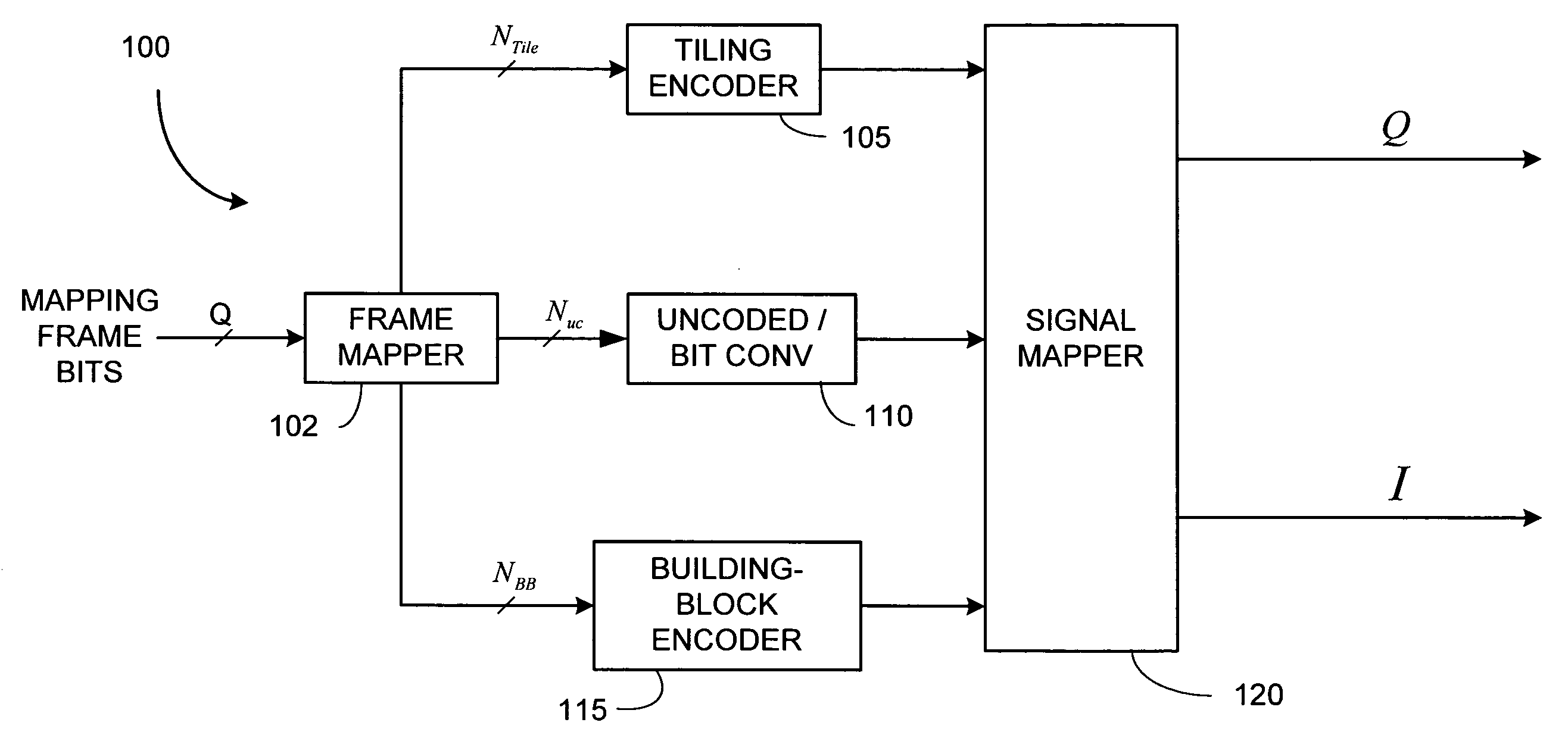Tiled-building-block trellis decoders
a trellis decoder and building block technology, applied in the field of trellis coded modulation techniques, can solve the problems of limiting the overall msed of the system by the msed of the tiling code, and achieve the effects of reducing or eliminating the negative performance effects associated with high error coefficients, further coding gain, and reducing the average signal energy of the constellation
- Summary
- Abstract
- Description
- Claims
- Application Information
AI Technical Summary
Benefits of technology
Problems solved by technology
Method used
Image
Examples
Embodiment Construction
[0064]To understand the general framework of the present invention, once again consider FIGS. 1a-1e from the IEEE 802.16a-2004 standard (“WiMAX”). Recall in WiMAX the 16-QAM constellation 174a can be viewed as tiling into each quadrant a copy of the 4-QAM building block 20 whose inter-block MSED is D2=40. As observed by the present invention, though, the WiMAX encoder 163 sub optimally tiles the building block 20 without using a tiling code, so that the coded 16-QAM constellation 174a's MSED is lowered to D2=16. Similarly, the 64-QAM constellation 174b and 256-QAM constellation 175 are built up from tiling a larger and less powerful (D2=20171 as generated by the WiMAX punctured encoder 30.
[0065]Consider the 4-QAM building block 20 of FIG. 2. Because each of the four constellation points in the building block 20 are located at (±1, ±1), we see that the raw uncoded minimum distance between adjacent constellation points is D=2, or D2=4. Based upon the bit encodings of FIG. 2 of these f...
PUM
 Login to View More
Login to View More Abstract
Description
Claims
Application Information
 Login to View More
Login to View More - R&D
- Intellectual Property
- Life Sciences
- Materials
- Tech Scout
- Unparalleled Data Quality
- Higher Quality Content
- 60% Fewer Hallucinations
Browse by: Latest US Patents, China's latest patents, Technical Efficacy Thesaurus, Application Domain, Technology Topic, Popular Technical Reports.
© 2025 PatSnap. All rights reserved.Legal|Privacy policy|Modern Slavery Act Transparency Statement|Sitemap|About US| Contact US: help@patsnap.com



